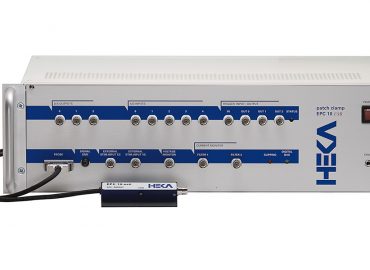D360 vs D360R
Which Research Amplifier Do I Need?

Available as part of our amplifiers range, the D360 and D360R are both computer-controlled AC-coupled biological amplifier and analogue filter systems. They both comprise a main amplifier unit, a remote active headstage, and dedicated Windows-compatible software. And they’re both intended for electroencephalography (EEG), electromyography (EMG) and evoked-potential (EP) applications.
In fact, the D360R is based on the design of the D360.
They’re incredibly similar devices, with very similar functions. So the question is; when it comes to purchasing a new amplifier filter, how do you know which is the right one for your needs? To help inform your decision, here we take a closer look at the main differences between the two.
The 3 key differences between the D360 and D360R
1. Number of channels
First and foremost, these two systems differ in terms of the number of amplification channels they have to offer. The D360 features eight channels of amplification, filter and isolation – and all parameters are independent. Whereas the D360R features just four channels of amplification. It is the compact and cost-effective equivalent of the D360, yet still highly specified.
Therefore, when it comes to choosing the best amplifier filter system for your application, it’s important to consider how many channels (pairs of differential inputs) you will require.
2. Medical Certification
Is the device needed for use with patients? Or simply in a research environment?
Although it is designed for safe EEG, EMG and EP research, the D360R isn’t a medical device – and, therefore, is limited to human research applications only. If you wish to use the amplifier with patients (e.g. for diagnostic purposes), the D360 will be necessary. This is certified to the European Medical Devices Directive; and, as such, is suitable for both patient diagnostics and research.
3. Electrode impedance checking
The D360 has an in-built impedance checking feature. Essentially, this allows the operator to instantly identify electrodes that are exhibiting unacceptable resistances. The impedance levels can be custom set by the operator. And tri-colour LEDs, on the main unit, light up to indicate any issues.
By contrast, the D360R doesn’t include this feature. If an electrode impedance checking mode would be beneficial for your application, we recommend opting for the eight-channel D360 instead.
Other factors to consider
Above we have listed the main ways in which the D360 and D360R differ. But to select the ideal research amplifier for your needs, there are a few other factors you should take into consideration.
For example, whilst the D360 is only compatible with 32bit CED Signal and Spike2 software, the D360R software has been written in such a way, to ensure it is fully compatible – with both 32bit and 64bit versions. So, if you’re looking to use 64bit software, the D360R will be required.
It’s also important to bear in mind, the D360 allows for internal linking of positive and negative electrodes – so that multiple channels can share a single reference input. Whereas, the D360R operates in standard differential mode (with an additional common input). And whilst the D360R allows channels to be linked, unlike the D360, it doesn’t permit multiple channel grouping.
Find out more about our research amplifiers
Still not sure which is the right research amplifier for your needs?
You’re welcome to get in touch at any time. We have in-depth knowledge of both the D360 and D360R, including their main differences. And once we know a bit more about how you intend to use the system, we can advise on the best model for your requirements and even arrange a free no-obligation trial. Either give us a call on 01707 328347 or send an email to [email protected].
Alternatively, if you’d like to request a quote – for either the D360 or D360R – simply add the desired amplifier filter system to your request list and enter your details. A member of the team will then respond to your enquiry as soon as possible, with further information and an estimated cost.


